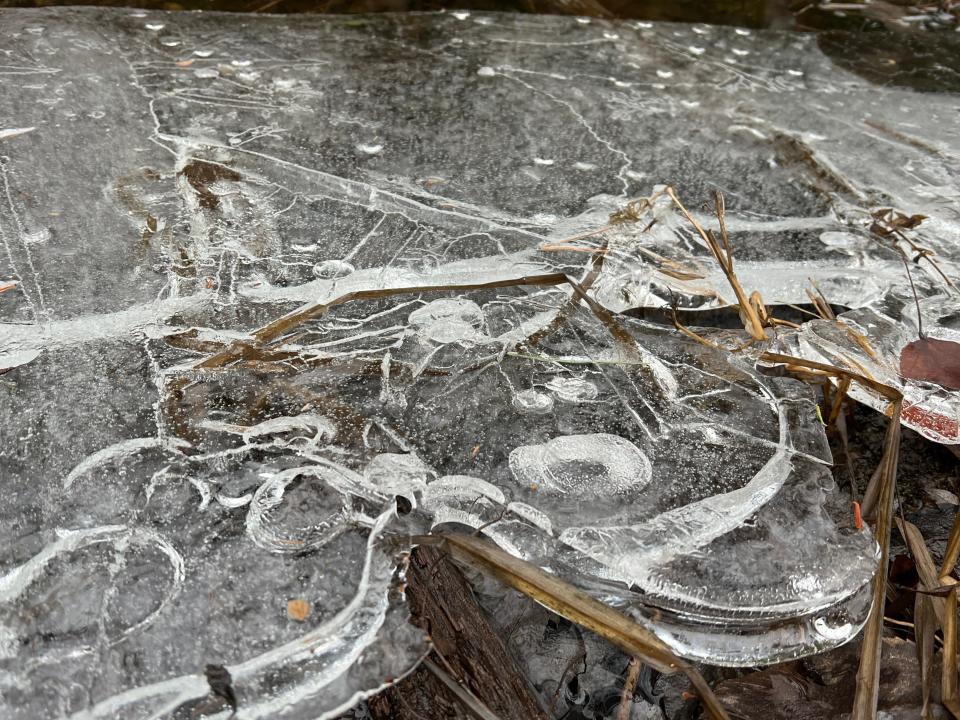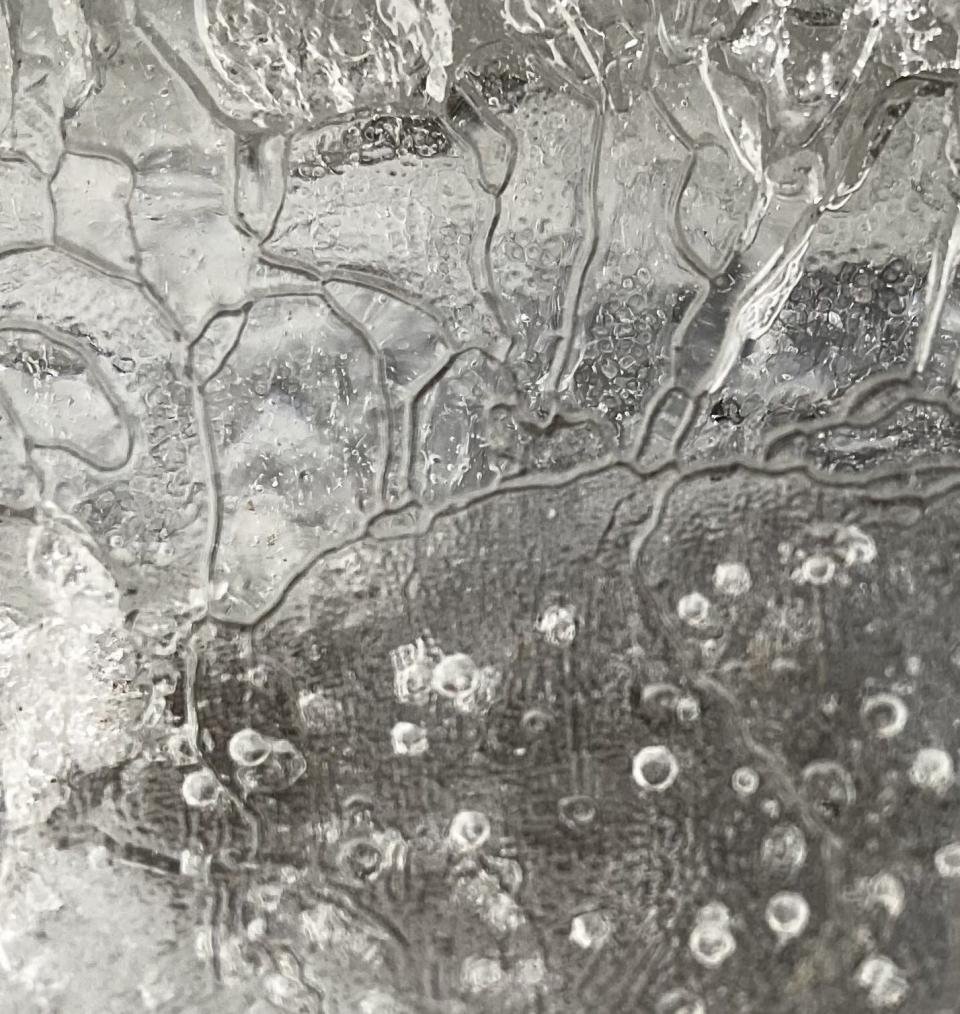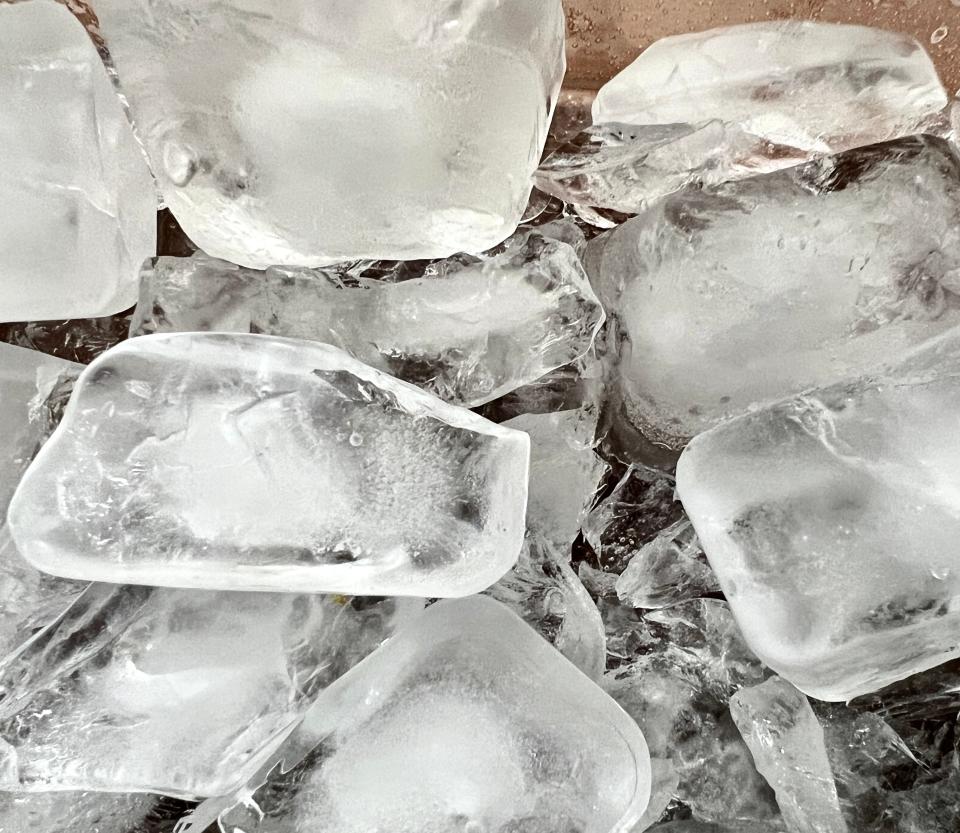What causes ice bubbles to form when ponds and rivers freeze? Nature News
It has been cold enough, finally, for ice to start forming on our local lakes and ponds. Ice has been accumulating along the edge of our river and almost spanned it before the recent warm, rainy weather.
In the depths of winter, I like to go down to the floodplain behind our house and bravely walk on the ice-covered shallow pond puddles that form whenever it floods. I was recently noticing the bubbles that formed in some of the ice when it occurred to me to ask, how does this happen? You would think the ice forms slowly enough for any gas bubbles to escape, with the liquid water filling in any air pockets. Where is the air or gas inside these bubbles coming from?

The gas inside the bubbles is largely coming from the water itself. Water contains a variety of dissolved gasses. Aquatic plants release oxygen into the water during photosynthesis. Both plants and animals release carbon dioxide when they breathe. Decomposers release methane. Waterfalls and wind stir air into the water. These gasses are more often than not invisible to the naked eye, microscopic bubbles, molecules even, held in solution by water molecules.
The water in a still pond or puddle, like those in my floodplain, freezes from the top and sides. As that water freezes, the dissolved gasses get forced out of the solution (ice holds less gas than liquid water). Since the water is freezing from the outside in, it forces those gasses towards the middle where they fuse into larger visible bubbles, trapped in the ice. The size and concentration of bubbles is highly variable, influenced by things like pressure from above or the sides, rate of freezing, and freeze-melt cycles. Bubbles in ice can also change shape over time as temperature or pressure changes.

If you don’t have a nearby pond, you can check out this phenomenon in your freezer. Look closely at an ice cube, the outer edges are often clear, and the inside cloudy or opaque. If you look closely, you can sometimes see tiny bubbles in there. These were formed the same way as in a pond or lake, the cubes are freezing from the outside in. Air gets pushed into the center and coalesces into tiny bubbles around which the water freezes.

But more fun than staring at the ice in your freezer is to go outside and find some natural ice. One of my goals this winter is to pay more attention to what the ice is telling me. Are there more bubbles in the middle of a frozen pond? If not, can I figure out why? If I can find a swamp with lots of decomposition, will I find methane bubbles in the ice? Can I set them on fire? What about all those contour lines that often form concentric circles in the ice? Are there more bubbles in river or pond ice? What about those concentric circles you often find in the ice covering a small pond? Circles, lines and shapes in the ice speak to different processes — differences in pressure or movement in the water or the presence of obstacles around which the water has to freeze.
The science behind the complexity one can discover in the ice of a small frozen puddle is extremely complicated. It makes me wish I had paid more attention in my high school physics class.

Susan Pike, a researcher and an environmental sciences and biology teacher at Dover High School, welcomes your ideas for future column topics. Send your photos and observations to spike3116@gmail.com. Read more of her Nature News columns online at Seacoastonline.com and pikes-hikes.com, and follow her on Instagram @pikeshikes.
This article originally appeared on Portsmouth Herald: What causes ice bubbles to form as ponds, rivers freeze? Nature News

